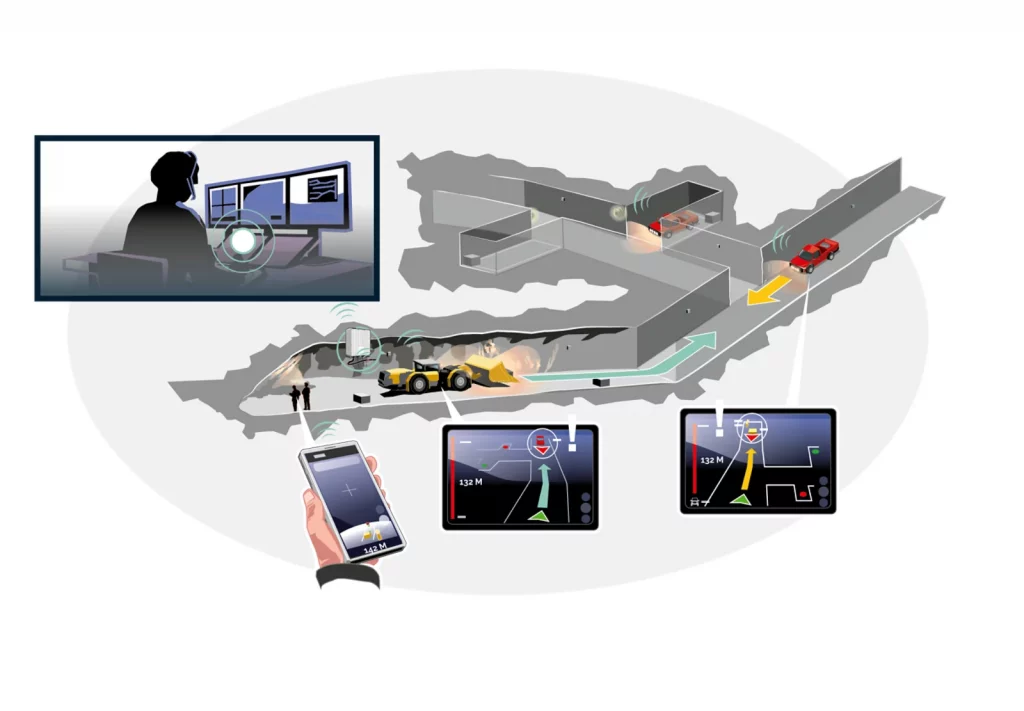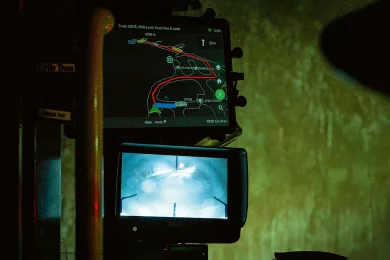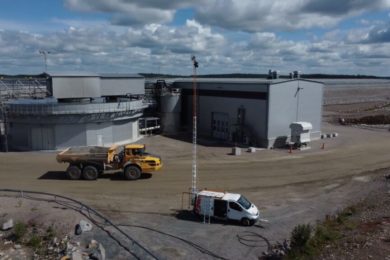OZ Minerals, through the implementation of Mobilaris Situational Awareness and Mobilaris Onboard, has improved traffic flows at its Carrapateena copper-gold mine in South Australia, according to a recent case study.
Having implemented the solutions from Mobilaris, owned by Epiroc, the mining company gained a better understanding of where machines and people were physically located underground – and operations became safer.
Since commencing production in December 2019, the Carrapateena mine has become, over the past decade, one of the biggest mining projects in the state. The ore must be hauled from the production levels to the crusher level via a short decline with limited passing areas, which poses challenges.
To optimise haulage flows, OZ Minerals deployed Epiroc’s Mobilaris Mining Intelligence decision support system to digitise the mine.
Daniel Bruce, Superintendent, OZ Minerals Carrapateena, said: “We saw potential to remove some of the constraints we have underground. You can’t see around corners, and you can’t see through rock, so understanding where things are – where people and machines are – is a lot more difficult than in a typical workplace on the surface.”
OZ Minerals rolled out the first feature in 2019: Mobilaris Situational Awareness, a solution for surface control room operators. Mobilaris Onboard, a solution for underground operators in vehicles, followed in 2021. Thanks to real-time 3D visualisation, anybody with access to a tablet or a PC can quickly understand where machines are operating, according to Epiroc.
“Mobilaris Situational Awareness allows you to see, live, at any point in time, where all the equipment and people are in the mine,” Bruce said. “It also allows you to navigate to locations, equipment and refuge chambers.”
OZ Minerals had initially installed Wi-Fi tags on all its vehicles, which provided accuracy to around 150 m. With Mobilaris Onboard, it can achieve location accuracy of 5-10 m without any extra infrastructure, and all that is needed are basic OBD2 adapters or a Doppler radar, Epiroc says. Implementation started with trucks and loaders, and now the entire underground fleet has been equipped.
This has significantly improved real-time position information, according to Amelia Schmidt, Senior Technician in the site operations team at Carrapateena.
“Everyone at the site operations centre – dispatchers, mine controllers and haulage control – is now using Mobilaris Situational Awareness,” she said. “Previously, it could take quite a bit of time to search for a piece of equipment, but it only takes seconds now to see its last location.”
The system also helps OZ Minerals with its fleet management – to determine where trucks are, for instance – thus becoming a tool in the decision-making process.

Schmidt said: “For those who are perhaps new to the mine, we’ve been able to insert points of interest on the map, for example where it is best to hold. Cycle times are well managed, despite underground operations becoming a lot busier.”
OZ Minerals then implemented a second Mobilaris feature: Mobilaris Onboard, a tablet in a vehicle that acts just like a car navigator but without any need for a dedicated tracking infrastructure. This provided everyone underground with a tool that enabled them to easily understand how equipment was positioned around them.
Bruce added: “This is another piece of information that the operator can use to make a decision – and all of these minute decisions add up to a more productive and safer workplace.”
For Carrapateena Truck Captain, Joel Dodd, everyday work has become easier thanks to Mobilaris Onboard.
“One of the main benefits is that we’re able to travel down and get to our locations a lot better,” he said.
OZ Minerals now has around 200 tablets in vehicles underground – in trucks, LHDs, face drill rigs and light vehicles – and the feedback has been very positive.
“When people can see more clearly where other people are, it helps them avoid unwanted interaction,” Bruce said.
This is an edited version of an Epiroc Customer story published here










